Post-Quantum Cryptography Accelerator IP
Filter
Compare
9
IP
from
7
vendors
(1
-
9)
-
APB Post-Quantum Cryptography Accelerator IP Core
- Implements ML-KEM and ML-DSA post-quantum cryptography digital signature standards. The system interface is an microprocessor slave bus (APB, AHB, AXI options are available).
- The design is fully synchronous and requires only minimal CPU intervention due to internal microprogramming sequencer.
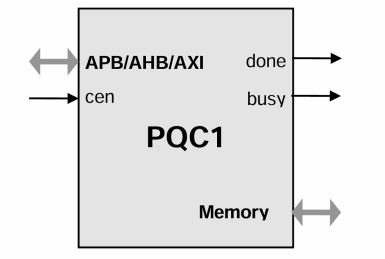
-
Post-Quantum Accelerator
- The Post-Quantum Cryptography IP core provides a high-efficiency hardware solution supporting ML-KEM (Kyber) and ML-DSA (Dilithium) as standardized in FIPS 203 and 204, along with additional hash-based signature schemes including SPHINCS+, XMSS, and LMS.
-
XMSS Post-Quantum Cryptography IP
- XMSS is a Post-Quantum Cryptographic (PQC) algorithm, meaning it is mathematically designed to be robust against a cryptanalytic attack using a quantum computer.
- XMSS is a stateful Hash-Based Signature Scheme that has been recommended by NIST in 2020.
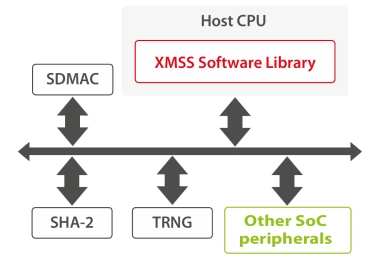
-
Unified Hardware IP for Post-Quantum Cryptography based on Kyber and Dilithium
- Turn-key implementations of the NIST FIPS recommended CRYSTALS post-quantum for key encapsulation (KEM) and digital signature algorithm (DSA)
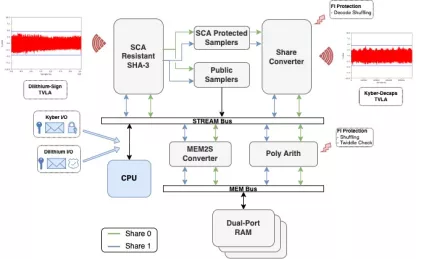
-
ML-KEM / ML-DSA Post-Quantum Cryptography IP
- ML-KEM (Crystals-Kyber) and ML-DSA (Crystals-Dilithium) are Post-Quantum Cryptographic (PQC) algorithms, meaning they are mathematically designed to be robust against a cryptanalytic attack using a quantum computer.
- Both have been standardized by the NIST in it post-quantum cryptography project.
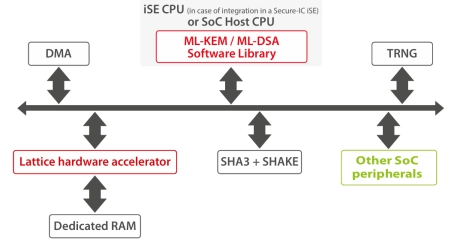
-
Crypto Box Toolset Secure Accelerator
- The Hybrid Crypto Box IP core is a comprehensive, high-efficiency cryptographic solution that combines RSA, ECC, AES, and SHA-2/HMAC with a built-in accelerator for post-quantum algorithms such as ML-KEM (Kyber) and ML-DSA (Dilithium). Designed for embedded systems with balanced resource constraints, it enables secure key exchange, digital signatures, authenticated encryption, and hashing, future-proofed for the quantum era.
-
Agile PQC Public Key Accelerator
- Agile IP comprised of HW/FW/SW, adaptable to future standards’ evolution
- Highly configurable IP can be tuned for specific applications with most optimal PPA
- Scalable PQC PKA IP complies with latest NIST PQC algorithms
-
SHA3 core for accelerating NIST FIPS 202 Secure Hash Algorithm
- Supports variable length SHA-3 Hash Functions
- Supports Extendable Output Functions (XOF)
- Configurable architecture for achieving the required performance and silicon area
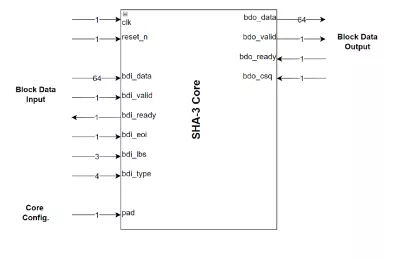
-
Cryptographic Cores IP
- The Cryptographic Cores IP portfolio delivers secure, high-performance implementations of symmetric, asymmetric, and post-quantum algorithms.
- Designed for low-area, low-latency operation, the silicon-proven cores help SoC designers and embedded teams build trusted, efficient devices for IoT, automotive, medical, and industrial markets.